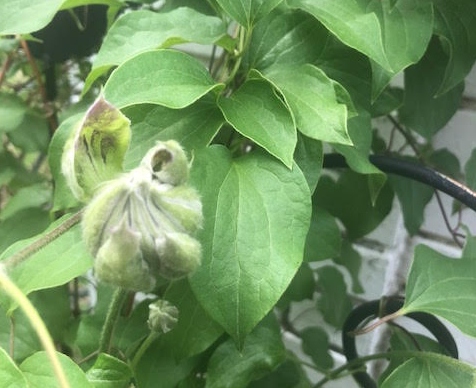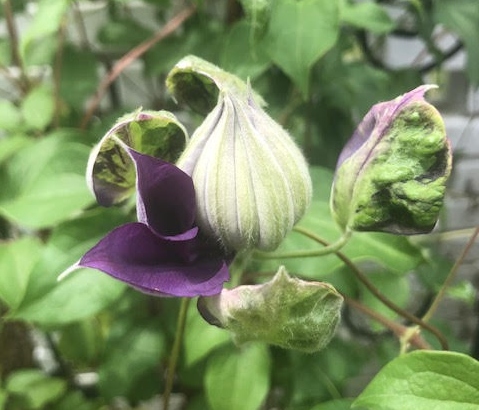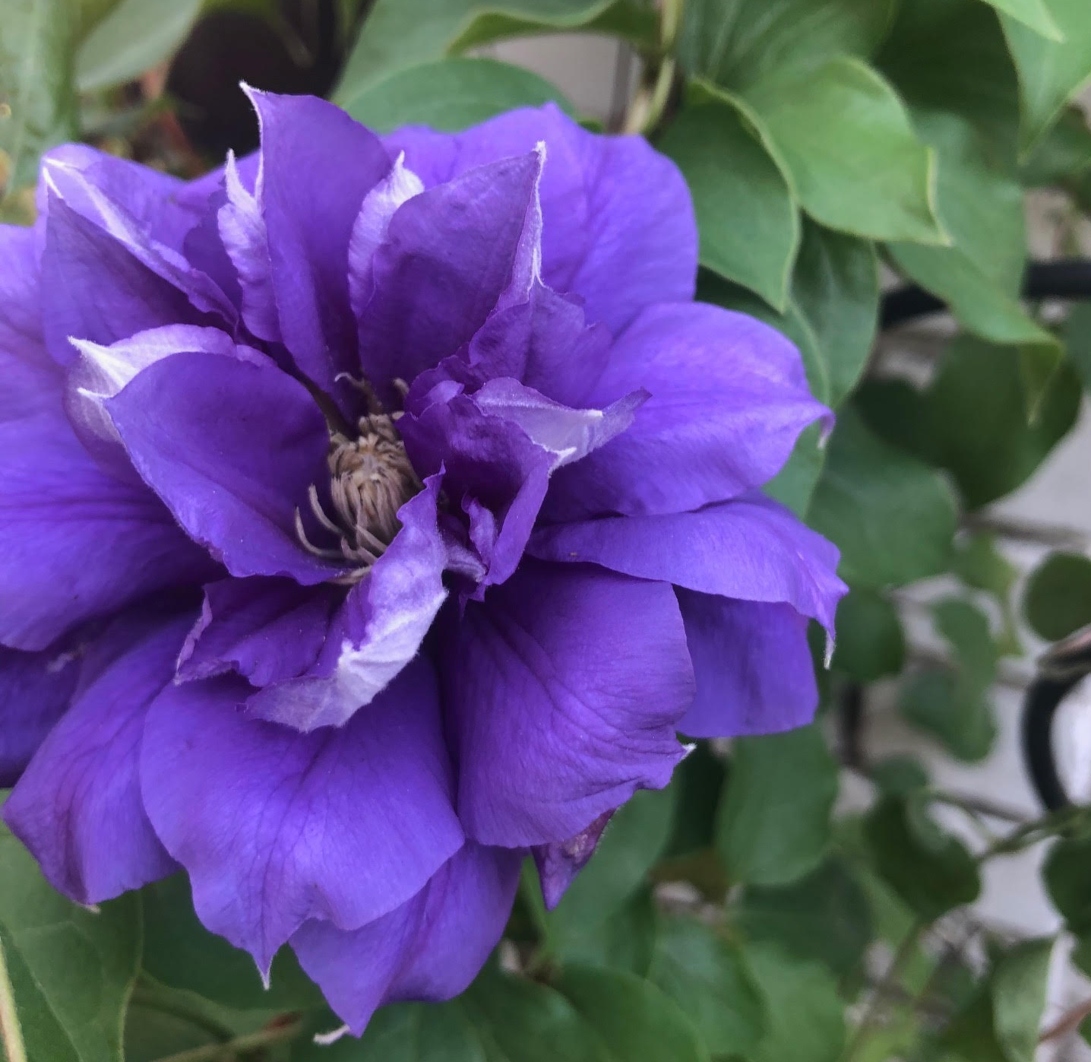
Once you’ve seen a flowering clematis in full bloom, you’ll understand why this easy-care perennial vine has been dubbed the Queen of Climbers. The vines bloom abundantly in an array of colors, shapes, and sizes, followed by attractive seed heads.
Personally, I’ve never met a clematis I didn’t love. I guess that is why I grow about eight different varieties of them and I’m always searching for another to add.
One of the great things about these queens is there is interest during the entire bloom cycle from bud, to the flower opening, and the seed head left behind.
Franziska Maria is one of my favorites. I have had her for about 20 years and she is a double, so twice the fun when she unfurls to full bloom.
Clematis can grow up to cover posts, pergolas, arbors, and fences, scramble across the ground or drape gracefully from a container; growing up to 8 feet in a season. New plants may take a few years to put on their full show. When I select a new one, I try to look for plants that are at least two years old, almost guaranteed to bloom the first year after planting.
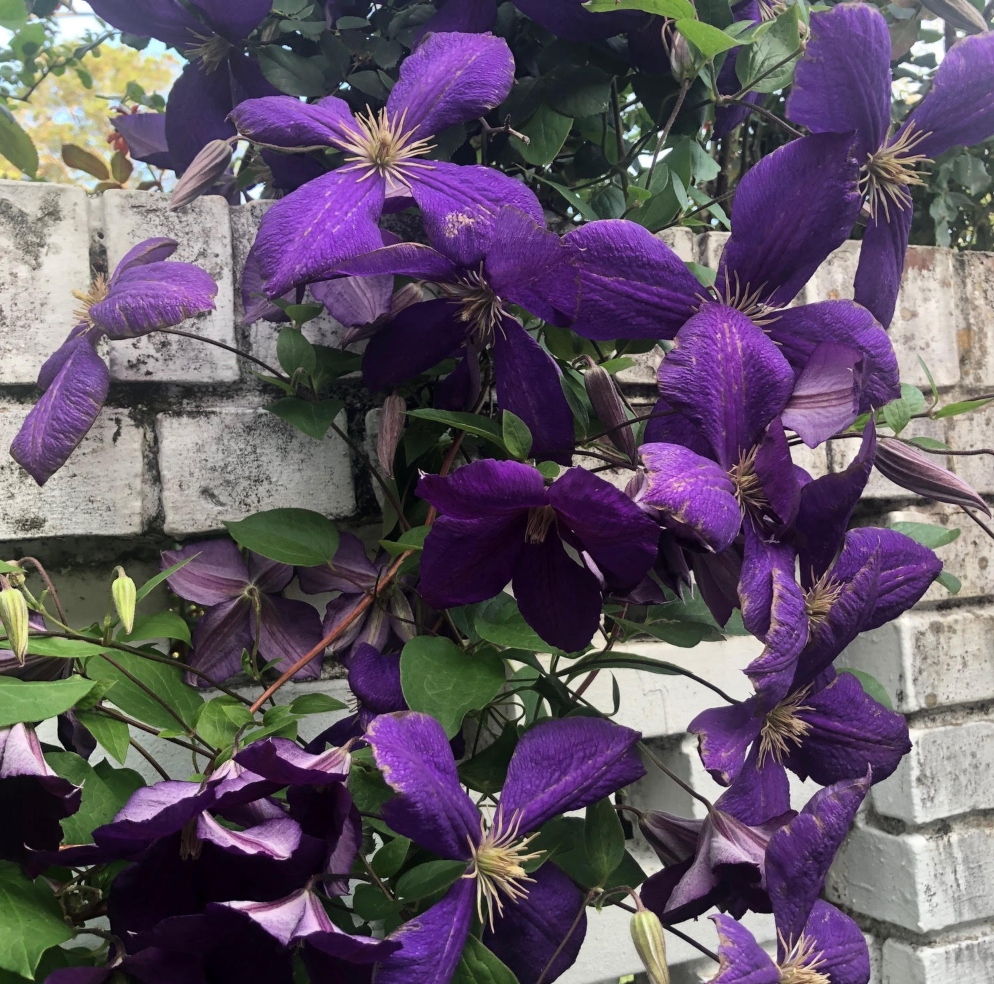
‘Jackmanii’ is a Clematis cultivar that, when it was introduced in 1862, was the first of the modern large-flowered hybrid clematises of gardens. It is a climber with large violet-purple blooms and still among the most familiar climbers seen in gardens. This one I’ve had for about 20 years and it grows up and through a huge Knock Out rose bush and then cascades over the patio wall.
When I bought my first clematis, probably 25 years ago, I was looking for one that could take some shade. Thank goodness there are more than 300 varieties and you are sure to be able to find one that is perfectly suited to the spot it will call home. Not that I haven’t moved them from time, including digging them up from the ground and putting them in a large container and vice-versa.
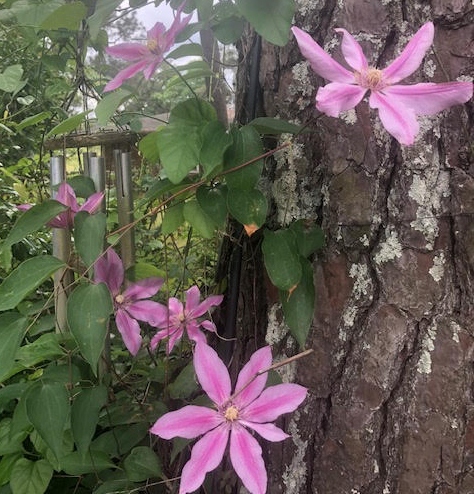
Early, middle, and late
Although many of the clematis plants in my garden are spring and summer bloomers, with a little planning, you can enjoy the Queen of the Climbers from spring through fall. To enjoy that length of performance you need to know the type of clematis you are planting. They come in three different types or groups.
C. macropetala
C. montana
C. armandii
‘Dr. Ruppel’
‘Ernest Markham’
Caring for clematis
Pruning:
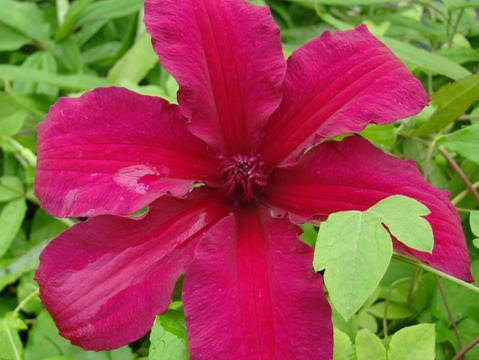
The key to pruning clematis correctly is knowing what type you have. If you’re unsure, the best plan is to wait and see when it starts blooming, as this will dictate how and when it should be pruned. If in doubt, there are a few simple rules you can fall back on: Don’t prune before flowering, don’t remove any stems with developing buds, and never prune in the fall as this may trigger new growth that will be susceptible to winter damage.
- Group 1: Blooms on old wood. Prune lightly right after flowering to remove any dead or damaged stems. Other stems can be cut back to maintain shape and size.
- Group 2: Blooms on both old and new wood. Prune lightly in early spring before they begin to grow. Remove any dead, damaged, or spindly stems to just above a pair of healthy buds. The remaining stems can also be cut back to where good buds are visible.
- Group 3: Blooms on new wood. Prune hard in late winter down to 1 to 2 feet from the soil line. Don’t worry, they’re vigorous growers and can grow up to 8 feet in a single season.
For all three groups, a harder pruning in the first two years can help encourage a more shrub-like, multi-stemmed plant.
When deadheading, 12 to 18 inches of stem can be cut back. This will help rejuvenate your vine and keep it looking nice and healthy.
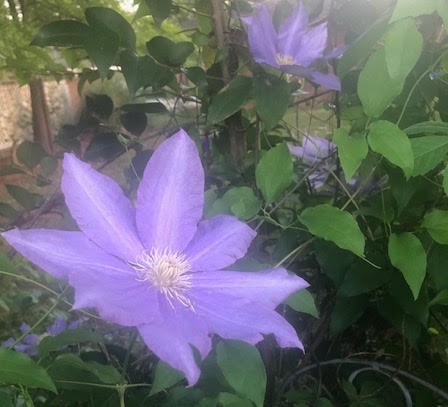
Soil:
Clematis prefer slightly alkaline soil but will tolerate a range of pH. It is more important that the soil be rich and well-amended with organic material. Clematis roots are delicate, fussy, and need a cooler environment along with moist, but well-drained, soil. Use a good layer of mulch or surround with low-growing plants to provide shade for the roots while allowing sun for the plant above ground.
Fertilizer:
They are heavy feeders. Apply a 10-10-10 fertilizer once a month during the growing season and continue until just before flowering. Fertilizing during flowering may have a negative effect and bring blooming to a halt prematurely.
Watering:
Under normal conditions, they need about an inch of water weekly once established. In warmer climates or during extreme heat, water deeply and more frequently; this will also help to keep the roots cool.
Support:
Clematis attach themselves to host plants or structures with their leaf stalks but need help to climb vertically. Secure stems to a support or trellis to encourage upward growth.
If you aren’t growing clematis in your garden, give them a try. These beauties may look delicate but they are resilient and fairly low maintenance. Most years, even with my early bloomers, I’ve had a second and third flush of blooms in the summer and fall. Just one more reason I love clematis!

